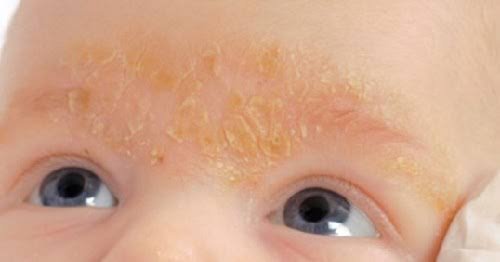Skin disease can affect anyone, whether male, female, adult, child and even baby. Due to a very different skin anatomy with adults, babies are a very vulnerable age group to skin disorders.
According to Bernard Cohen, M.D, director of children's skin science from Johns Hopkins Children's Center, the skin is an organ acting as a bulwark against a variety of elements that threaten the body from sunlight hinga bacteria.
In the first year, a baby will be very susceptible to interference because their skin layers are not yet perfect. Because it takes up to a year for the skin epidermis to develop quickly and function effectively. In infants, the skin structure is thinner, the bond between cells is weaker and more subtle. Baby's skin also has fewer pigments, and is unable to regulate the temperature as do older children or adults.
The appearance of redness and inflammation of the skin is one symptom of an allergic reaction in the baby's body. Here are some common skin ailments that are common in infants:
1 Intertrigo

image sourch
Intertrigo refers to an inflammation of the body folds. It is usually located on the inner thighs, underarms, and the bottom of the breast or abdomen.
These folds make the skin look red, itchy and cause pain when friction occurs. Generally occurs in obese babies.
Cause: May occur due to excessive moisture in the baby fold, which never gets air.
What to do: Wash the inside of your baby's skin fold with water and apply a zinc-oxide or petroleum jelly barrier cream to protect baby's skin.
2 Sweat Prickly

image sourch
Prickly or better known as miliaria, usually occurs on the neck, face, back, or baby's buttocks. Clinically miliari is visible in the presence of reddish skin accompanied by itching so the baby is fussy, with small, watery bubbles.
Cause: Hot air, humid weather, tight clothing and high baby activity can trigger a rash of prickly heat.
What to do: As much as possible avoid your baby from overheating and give loose clothing. That way, the rash will look better within about 30 minutes.
3 Seborrhea

image sourch
Seborrhea is an inflammation of the upper skin, which causes scalp on the scalp, face, sometimes on other body parts such as behind the ears, neck, cheeks, and chest. This disease is most common in infants under 6 months of age. On the scalp, seborrhea looks like dandruff, yellow or crusty scales.
Cause: unknown.
What to do: Perform traditional treatment by rubbing olive oil or baby oil on your baby's scalp, then brush gently.
4 Eczema

image sourch
Eczema can appear anywhere in the baby's body from the age of 3 to 4 months, although very rarely found in the former diaper area. Eczema or often called eczema, or dermatitis is a severe inflammation that causes the formation of blisters or small bubbles (vesicles) on the skin until it finally breaks out and secretes fluid. Conditions are more severe, this disease can also cause the skin to turn red, discharge, and crust.
Cause: Anything can be a baby trigger susceptible to eczema (with a genetic predisposition or family history of allergies). Each baby has a different eczema originator. There are people who after holding the soap or detergent will feel the extraordinary itch, some are caused by other materials or household appliance.
What to do: The main goal of treatment is to relieve itching to prevent infection. When the skin feels very dry and itchy, lotion and moisturizing cream is highly recommended to make the skin become more moist. For more severe cases, consult your doctor about the use of steroid ointment, to reduce inflammation.
5 Contact dermatitis

image sourch
Contact dermatitis is an inflammation of the skin that occurs because the skin has been exposed by irritating ingredients or causing allergic reactions. Contact dermatitis will cause a large rash, itching and burning sensation.
Cause: If a rash occurs throughout your baby's body, soap or detergent may be one cause. If the affected chest and arms, the culprit can be from dirty clothes.
What to do: In mild and moderate cases, avoidance of irritant (irritant) and the use of hydrocortisone-containing creams (corticosteroids) can help reduce itching and redness of the skin. In severe cases, drugs taken by corticosteroids and anti-inflammatory drugs are needed to reduce inflammation and itching. We recommend that you consult with your doctor before using hydrocortisone or antihistamine cream.
Regards,
@saidul
You just planted 0.18 tree(s)!
Thanks to @saidul
We have planted already 5460.69 trees
out of 1,000,000
Let's save and restore Abongphen Highland Forest
in Cameroonian village Kedjom-Keku!
Plant trees with @treeplanter and get paid for it!
My Steem Power = 20595.60
Thanks a lot!
@martin.mikes coordinator of @kedjom-keku
Downvoting a post can decrease pending rewards and make it less visible. Common reasons:
Submit
Great Article @saidul , It's quite interesting to note that apart from the ones listed above, the infants also may be at the risk of developing various skin infections by different types of bacteria and viruses.
Downvoting a post can decrease pending rewards and make it less visible. Common reasons:
Submit